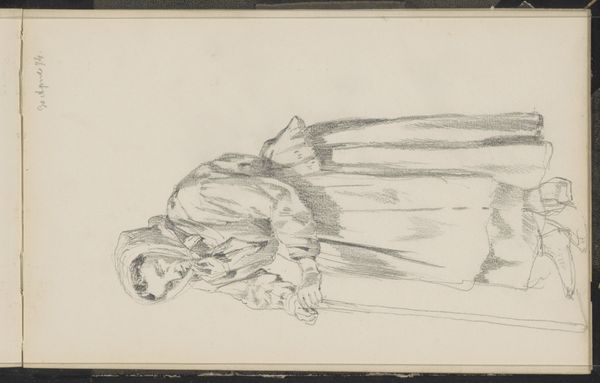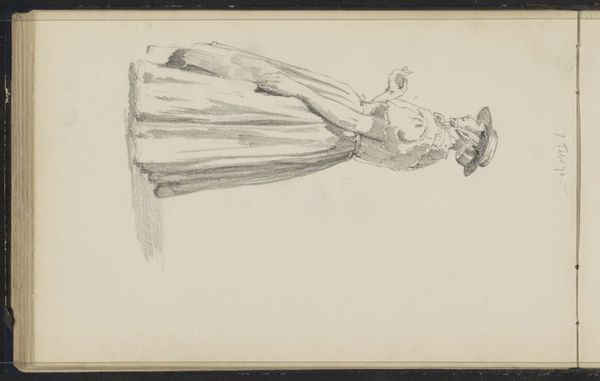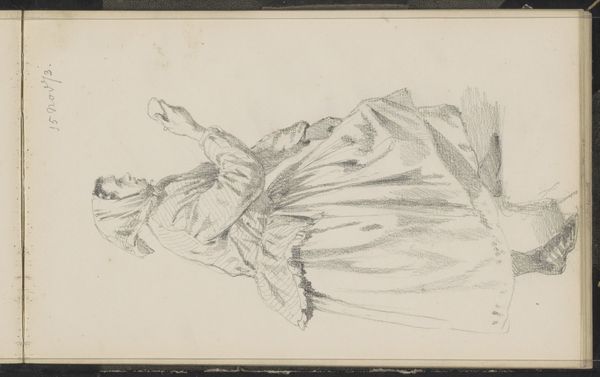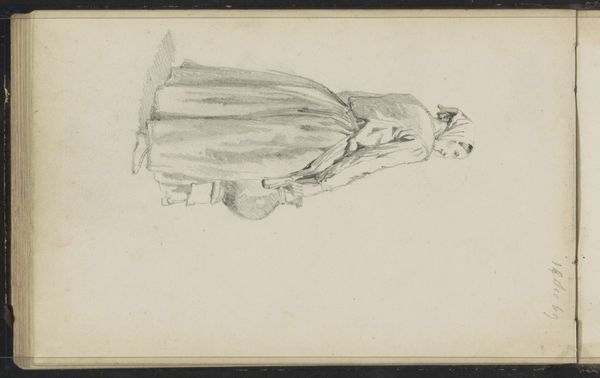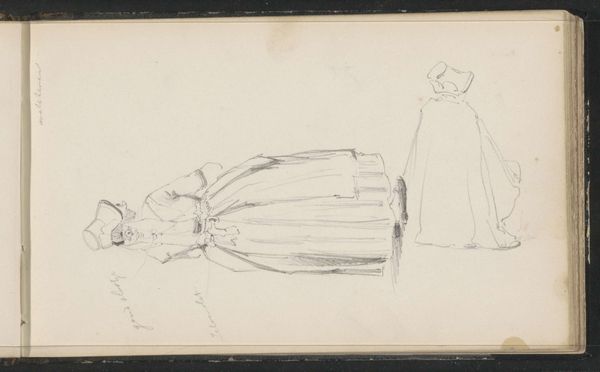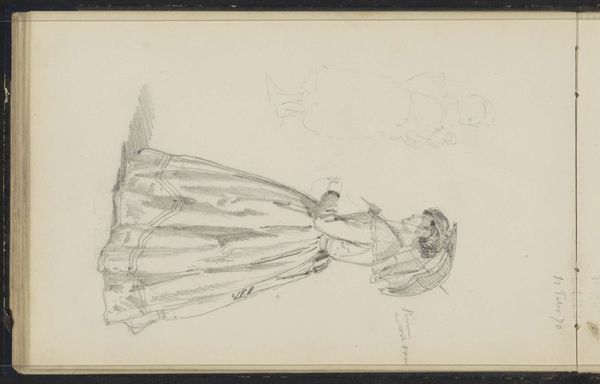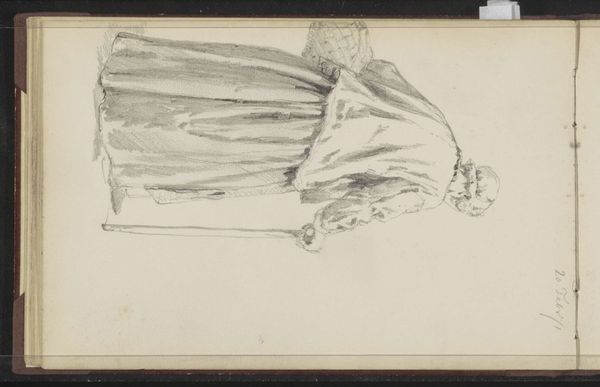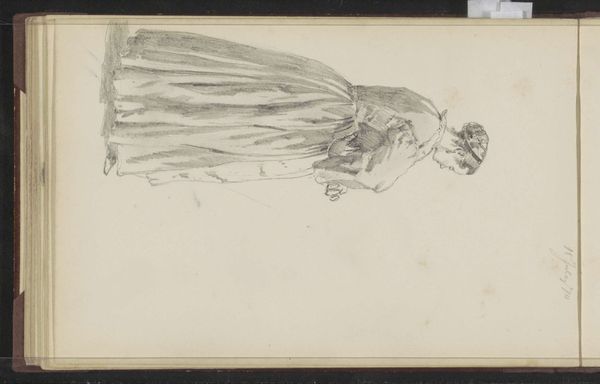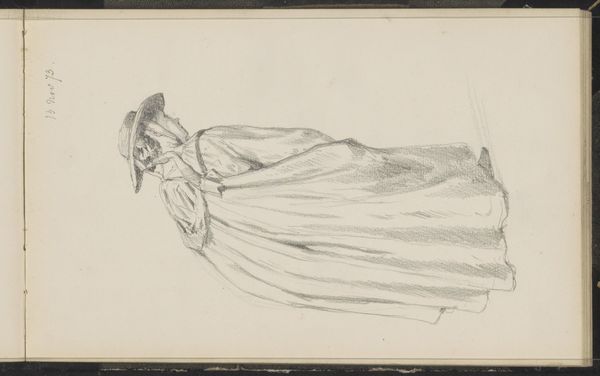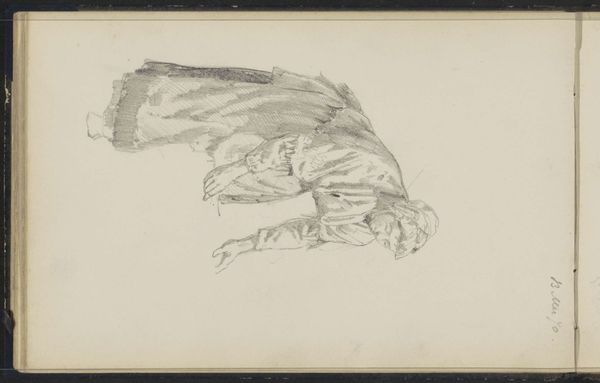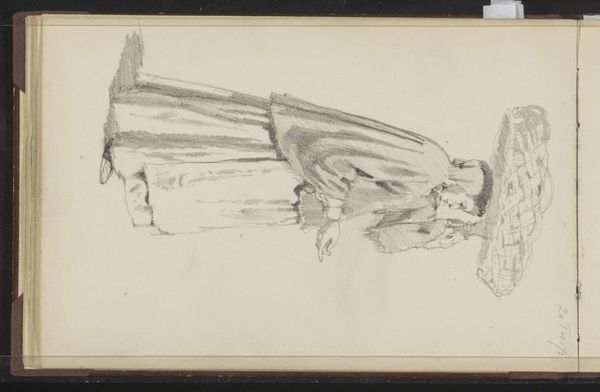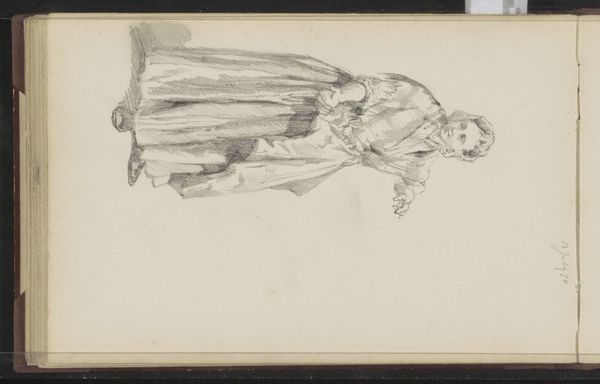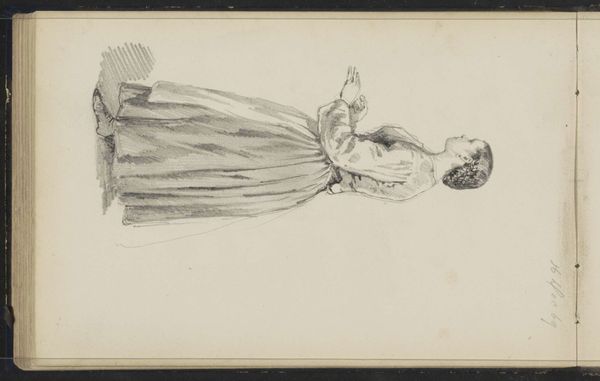
drawing, pencil
#
portrait
#
drawing
#
toned paper
#
light pencil work
#
pen sketch
#
pencil sketch
#
figuration
#
personal sketchbook
#
ink drawing experimentation
#
pen-ink sketch
#
pencil
#
pen work
#
sketchbook drawing
#
sketchbook art
Copyright: Rijks Museum: Open Domain
Curator: So, we’re looking at Cornelis Springer’s "Vrouw met uitgestoken handen," or "Woman with outstretched hands." It’s thought to have been made sometime between 1870 and 1875. It's currently held in the Rijksmuseum's collection. Editor: Those hands immediately give me a feeling of supplication, almost… desperate. It’s just a light pencil sketch, but it evokes a surprising amount of pathos, doesn’t it? Curator: It's remarkable how much he conveys with such simple materials. He used a combination of pencil and ink, actually – various pen strokes laid down with the graphite – on toned paper to capture her figure. A sort of controlled quickness that tells of lots of practice and technical mastery. Editor: I’m always struck by how much labour goes into things like toned paper. Preparing the surface for the artist’s marks; someone had to ensure evenness. And look at the line quality achieved. I’m thinking about the materiality of it – what kind of pencil allows for such variation? How many layers build up the skirt? There’s such attention given to volume there, which, you're right, speaks volumes, especially with that rough unfinished texture everywhere else. Curator: Indeed, Springer’s really highlighting that relationship between labor and the final sketch, here. You can practically see him wrestling with form. A struggle. Editor: The way her garments seem both sturdy and collapsing emphasizes this woman's status in society. Those hands! Reaching out, needing... They say so much about gender roles, dependency... perhaps it speaks to the lack of autonomy women had during that time. This tiny personal sketchbook drawing whispers tales of women being forced to become dependent on the people surrounding them. Curator: Maybe so. What's so captivating about sketchbook art, isn’t it, is that intimacy, it being just that first pass that we witness, catching these almost accidental outpourings. This might have been such a work. But whatever was behind the sketch, it certainly captures our imagination, doesn’t it? Editor: Absolutely. I’m thinking about the consumption and preservation of this object over a hundred years later and am still left contemplating how the raw simplicity of this particular sketch leaves us considering how human struggles transcend both time and materiality.
Comments
No comments
Be the first to comment and join the conversation on the ultimate creative platform.
